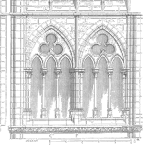
Guest Post by Greg Caroll (first posted on CERM ® RISK INSIGHTS – reposted here with permission)
The 2009 release of ISO 31000 was the first step across the threshold into 21st century risk management. Unfortunately the industry that has developed around it has firmly grabbed the doorway and won’t let go. Although the latest revisions make references to decision making and integration into functional purpose, it totally misses the point of risk management, which is to assist navigating a complex world. [Read more…]









